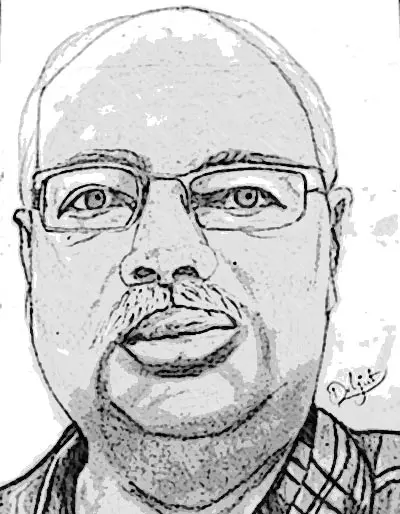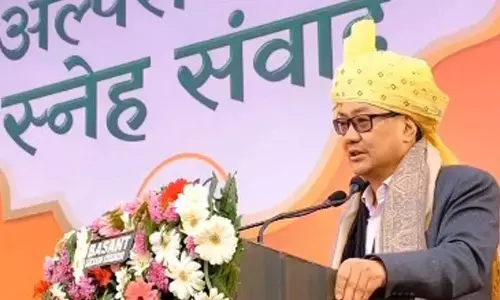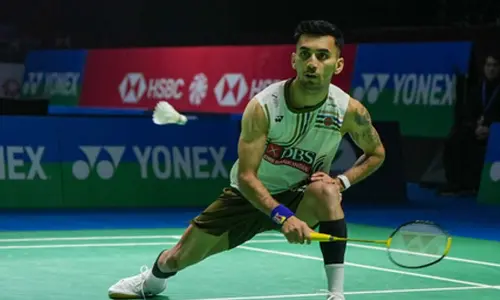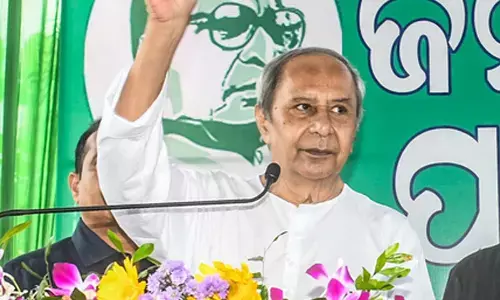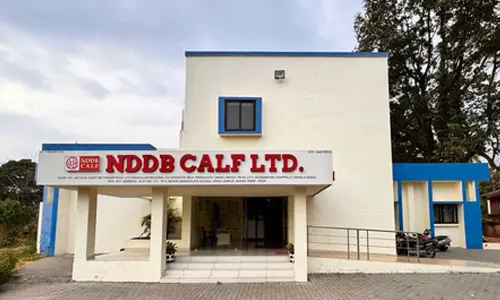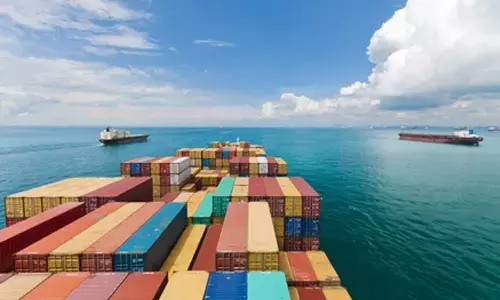Forming anti-Modi front: A daunting task
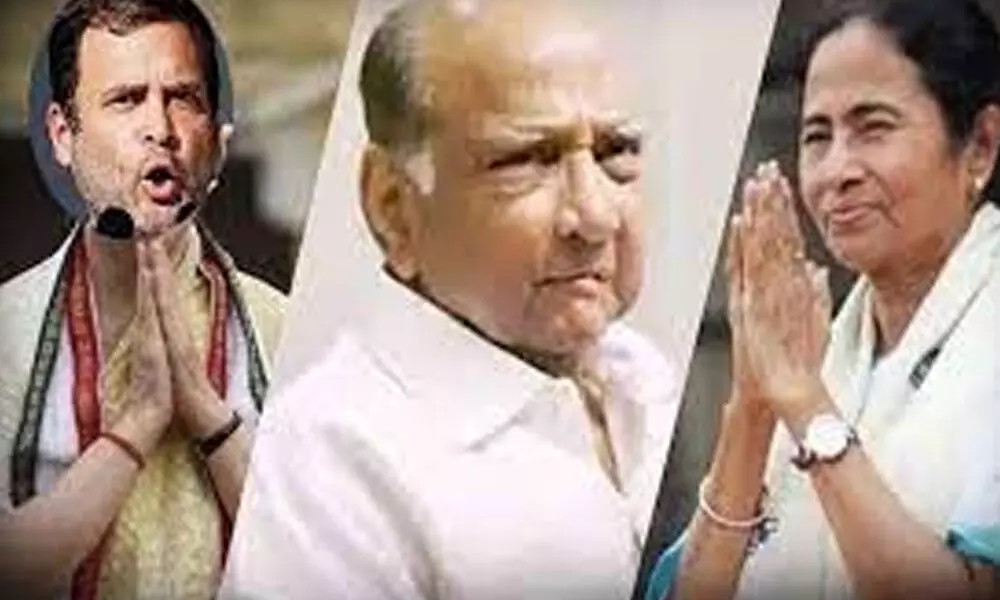
Forming anti-Modi front: A daunting task
The leaders of regional parties seem to have been bitten by a new bug – the post of Prime Minister.
The leaders of regional parties seem to have been bitten by a new bug – the post of Prime Minister. Since individually, they cannot achieve their dreams, efforts are on to unite all anti-BJP forces. It appears India is passing through a peculiar political situation. All these years, the political parties used to depend on the strength of their party cadre and people's aspirations and confidence in the leaders and the party to win the elections. But now as in any other sector, they are looking towards 'strategists.'
This clearly indicates that all those who want to rule the country have no confidence in themselves and their capabilities. They don't have their own strategies to win over the people. Apparently, they also cannot think of offering different policies and programmes for the welfare of people. But still they want to forge alliances. We have seen that it is not their political abilities which make them come up with alliances. It is either their tyrannical attitude or disturbed political conditions in their respective States, which are driving them towards an alliance.
It is in this context one needs to examine the recent meeting between Mamata Banerjee and Sharad Pawar in Mumbai and a team of their strategist Prashant Kishore meeting Telangana Chief Minister K Chandrashekar Rao in Hyderabad on Thursday.
Let's start with the meeting between Mamata Banerjee and Sharad Pawar and the comment of former – "What UPA, there is no UPA." On the other hand, Pawar's tone and tenor was different but one thing both seem to be saying is that they are not willing to allow Rahul Gandhi to head the alliance. They are of the view that any alliance that is formed before 2024 elections should not be dominated by one party anymore. They seem to take a view that Congress can be part of the alliance but will not be allowed to call the shots. Though neither Mamata nor Pawar said in so many words, their main problem seems to be Rahul Gandhi who appears to be heading towards becoming the AICC president 2.0. This, if it happens, even the G-23 leaders in Congress party may not like it. Mamata and Pawar are convinced that if Rahul Gandhi is allowed to lead them, Modi's return would be a certainty.
Mamata and Pawar, perhaps, want to provide a platform to the disgruntled elements in the Congress who may think of exiting the party when an internal churning takes place in Congress next year. They reportedly hold the view that by roping in the disgruntled leaders in Congress, they can not only expand their footprint, but also prevent them from joining the saffron party. But then to what extent these elements will believe and trust the leadership of these two leaders remains to be seen.
Even if we presume that a front would take shape by mid-2022 thanks to the ideas thrown up by the strategist, the big question would be how viable the new alternative would be and what kind of acceptability leaders like Mamata or Pawar will have? If they feel that Rahul's style of functioning is unilateral, they are no less dictatorial in their style of functioning. Second question is how acceptable they would be to the India Inc? Can any party win the elections if they are not acceptable to corporates?
One needs to take a realistic view of the political scenario in the country. Mamata may be buoyant following her recent victory in West Bengal but she should not forget that there has been a considerable surge by BJP. Secondly, she herself had lost the elections and had to win in the second attempt by creating a bypoll.
Massive victory in West Bengal alone or for that matter in any State by any regional leader cannot catapult him or her into the seat of Prime Minister. There should be acceptability in a majority of the States. It is unlikely that Mamata would be acceptable to voters in Odisha, Meghalaya, Assam etc. In Tripura, she may succeed to some extent. Similarly, she will not be acceptable in North India. There are leaders like Mayawati who also dream of becoming Prime Minister. She certainly will not like to play second fiddle. Down South, too, Mamata will not get much support. At the most, she may be in a position to influence about 40 seats or so. She has been dreaming of making her mark outside West Bengal since 1998.
Sharad Pawar, too, cannot emerge as a leader who would be acceptable in all regions. NCP has its presence in Maharashtra and Goa and in some other Union Territories. Even in Maharashtra, NCP on its own cannot come to power. It has to ally with Shiv Sena or Congress. TMC and NCP together can hope to win not more than 70 or 80 seats.
Let's presume that strategist's efforts will succeed and Mamata and Pawar will succeed in forming an alliance by bringing on board regional parties like TRS, YSRCP, Samajwadi Party, Left parties, Aam Aadmi, Biju Janata Dal, DMK, RJD etc., still they may not be able to reach anywhere near the half-way mark to form the government. Congress party has a significant presence in about 160 seats. Hence it may become inevitable for the proposed alliance to give due importance to Congress party and may even have to allow it to lead the coalition.
Mamata and Co may argue that Congress is in no position to call the shots and the grand old party is not what it was in 2004 or 2009. True, Congress is now a weakened party. But then this throws up a new challenge to the proposed alliance. New power equations between the alliance partners will have to be worked out, which is not an easy task.
Pawar has been finding it difficult to even keep the Maha Vikas Aghadi, a coalition in Maharashtra, intact two years after it has been formed. Reports indicate that a large number of MVA leaders are under scanner and this includes Ajit Pawar, the nephew of Sharad Pawar. The possibility of most of them joining BJP is also not ruled out to avoid raids by central agencies.
Pawar is known for running a virtual fiefdom through cooperatives in several vital sectors such as sugarcane, credit societies, cooperative banks, agricultural marketing societies, dairy and education etc. It is a fact that ever since he staged a coup against Vasantdada Patil in 1978, Pawar has been a hurdle for the Congress in the State. But outside Maharashtra, he cannot do the same.
Another major problem for the proposed alliance would be the fund crunch. With ambitions running high, all ruling parties in the States have been on a spending spree in the form of direct cash benefit schemes and buying votes ranging from Rs 3,000 to Rs 10,000 per vote.
Even if one can work out a workable action plan to mobilise funds and let us for argument sake agree that the corporates will back them to oust the Modi government, the big issue is credibility factor of regional party leaders in their own States. The going is not smooth either in Telangana or in Andhra Pradesh. A lot would also depend on the outcome of the results in Uttar Pradesh Assembly elections. If BSP or Samajwadi Party makes significant gains, they would not agree for any kind of alliance with Mamata and Co. The Mamata and Pawar duo may not agree to join the alliance led by Mayawati.
The country has seen many experiments of coalition governments from 1977. Barring a couple of them like the one led by P V Narasimha Rao, the success rate of coalition governments has been dismal. How things will shape up will certainly make an interesting reading in the months to come.

